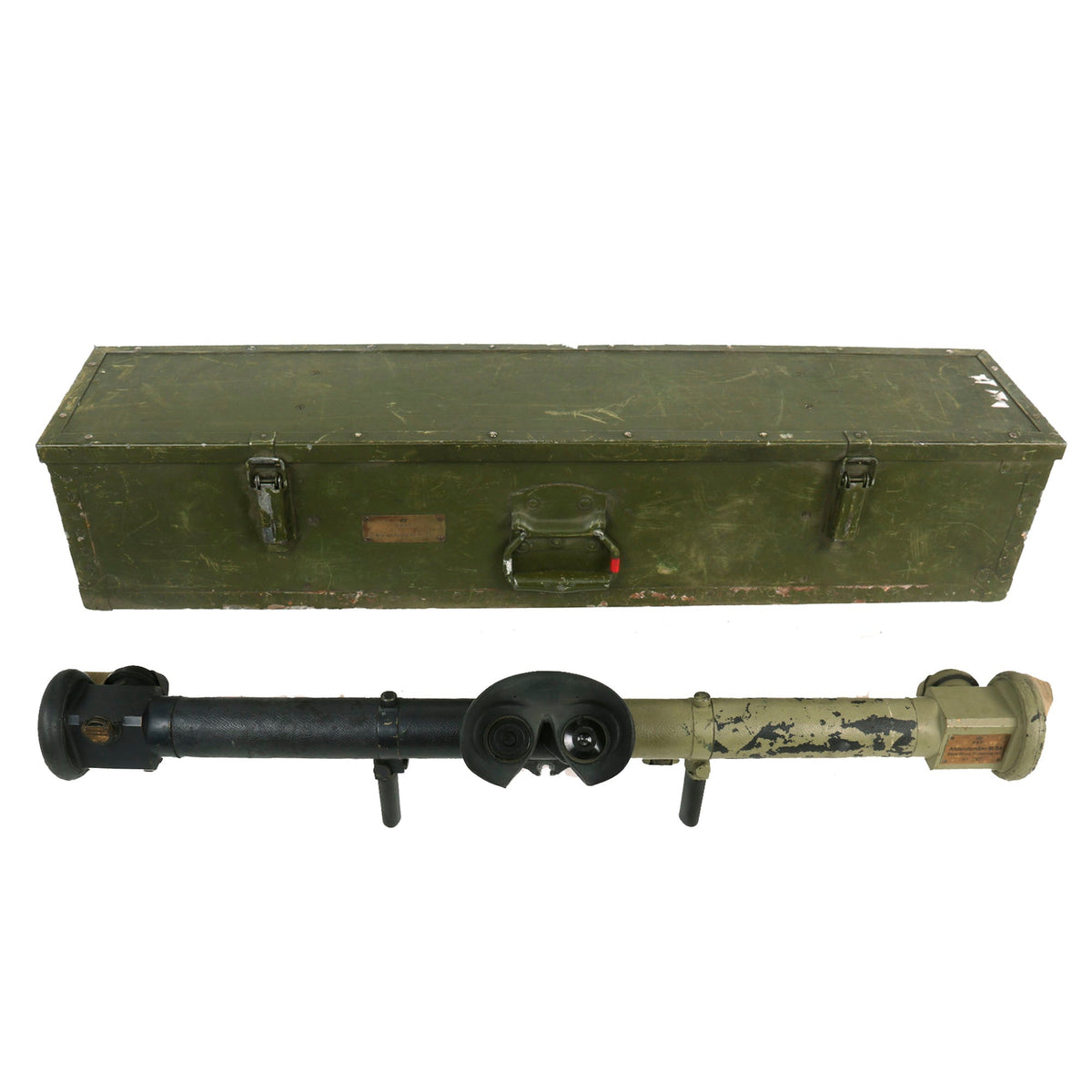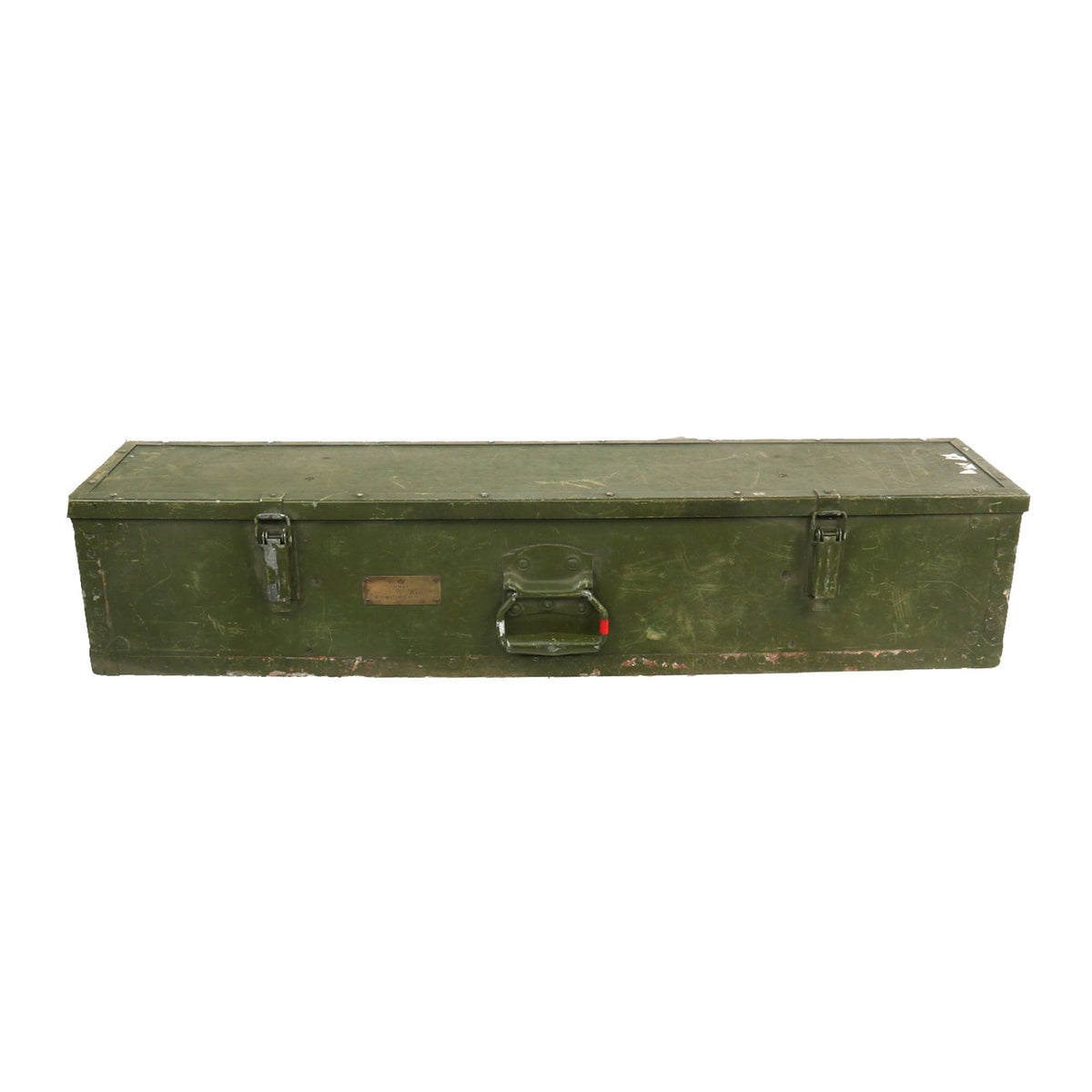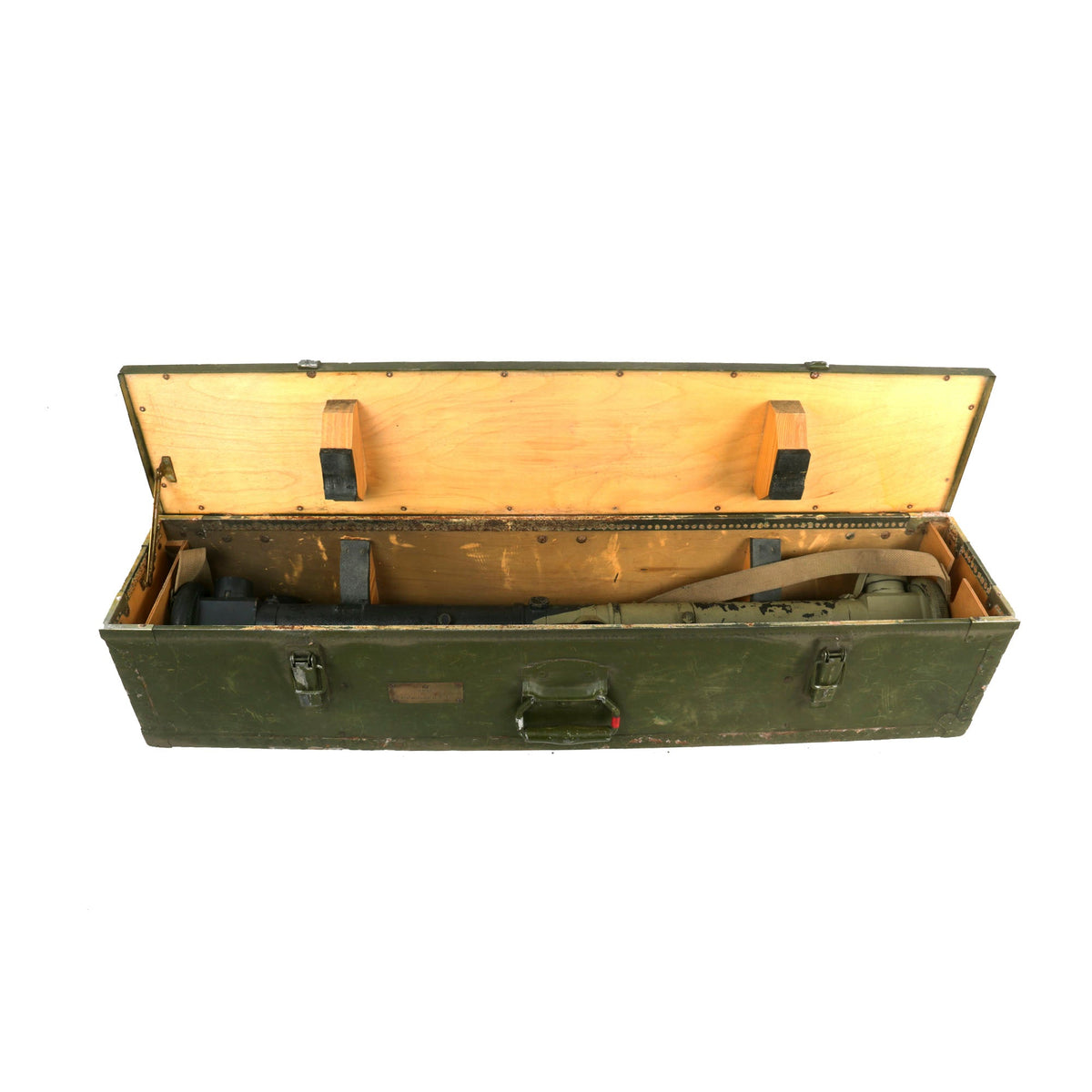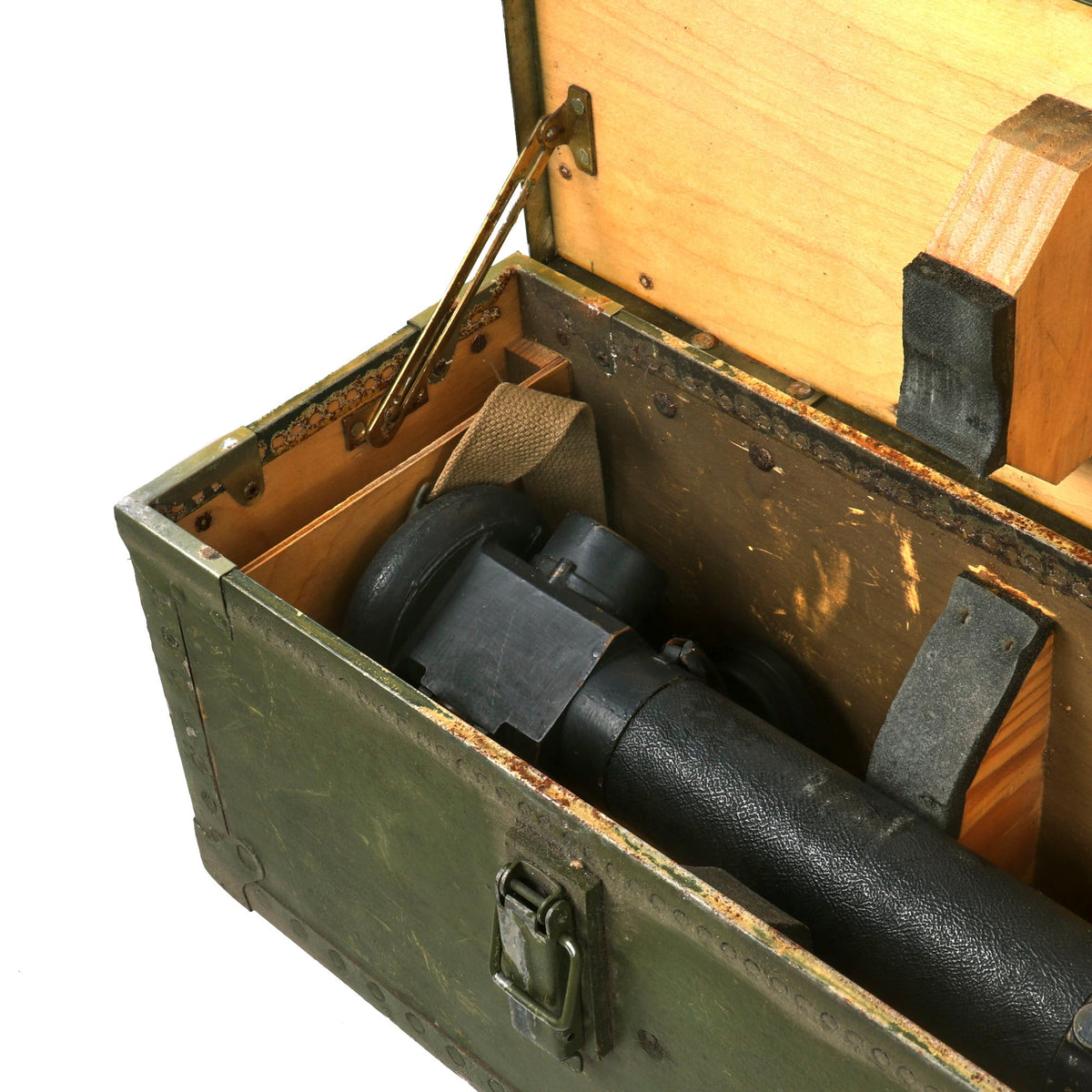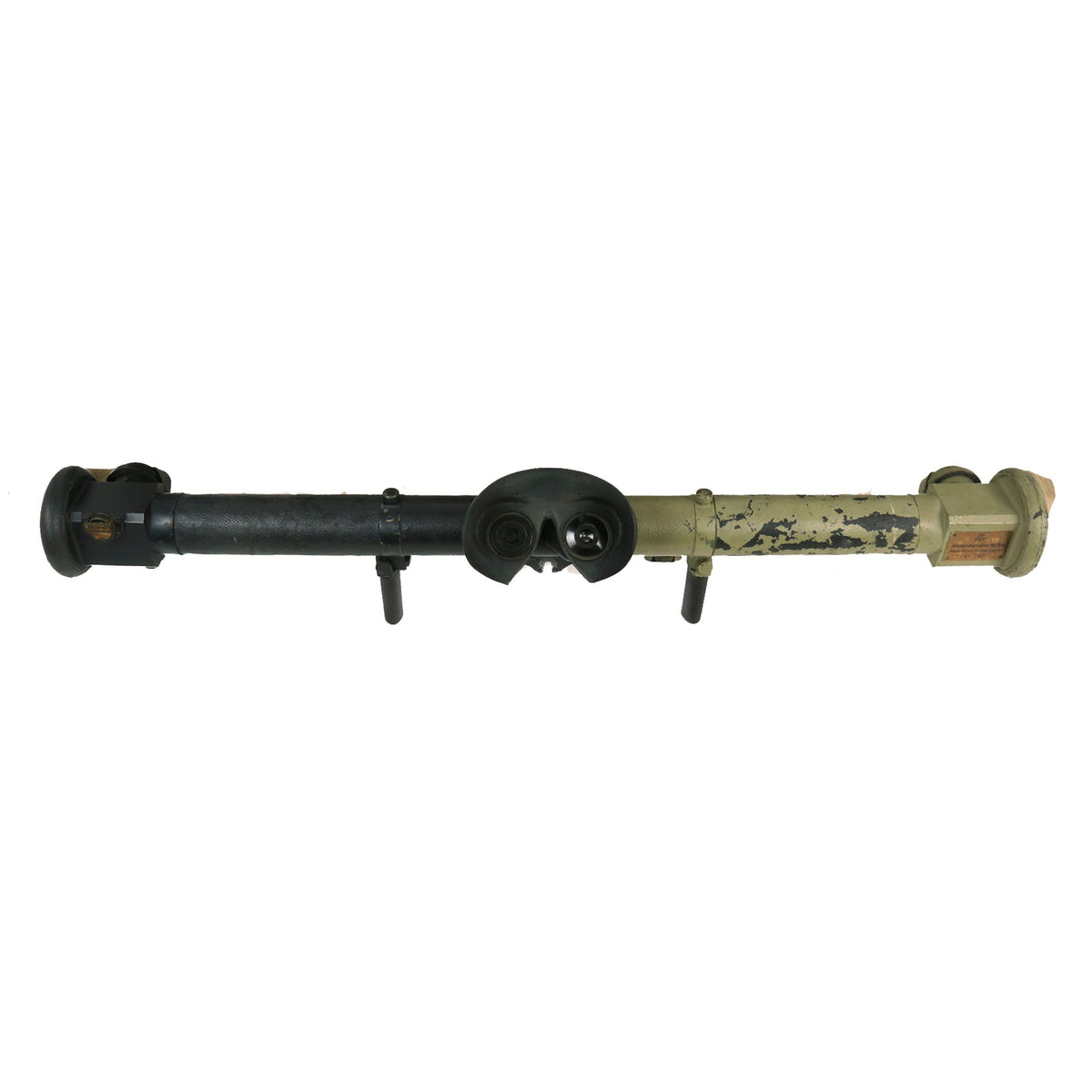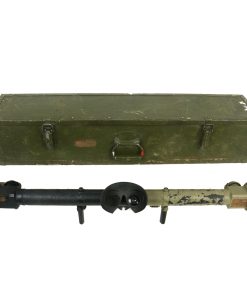Original British WWII Barr and Stroud Field Rangefinder in Original Transit Chest Issued to Royal Danish Army as Afstandsmåler M/54 Original Items
$ 395,00 $ 118,50
Original Item: Very few available. This is a genuine WW2 manufactured rangefinder developed by Barr & Stroud Limited who was a pioneering Scottish optical engineering firm, initially formed in 1913 in Glasgow. They played a leading role in the development of modern optics, including rangefinders, for the Royal Navy and for other branches of British Armed Forces during the 20th century.
The Rangefinder was sold and reissued to the Danish army during the cold war and is marked as such. This example is in excellent condition, fully functional and contained in the original wood transit chest. The data plate on the transit chest reads:
(CROWN)
HMAK
Afstandsmåler M/54
The data plate on the rangefinder reads:
(CROWN)
FKF
Afstandsmåler M/54
Basis 80cm. Forstørring 14x
Nr. 767
The range finder measures 36” in length and is light enough for a single man to use with ease. The transit chest measures 39 x 8¼ x 8¼”.
The coincidence rangefinder uses a single eyepiece. Light from the target enters the range finder through two windows located at either end of the instrument. At either side the incident beam is reflected to the center of the optical bar by a pentaprism. The optical bar is ideally made from a material with a low coefficient of thermal expansion so that optical path lengths do not change significantly with temperature. This reflected beam first passes through an objective lens and is then merged with the beam of the opposing side with an ocular prism sub-assembly to form two images of the target which are viewed by the observer through the eyepiece. Since either beam enters the instrument at a slightly different angle the resulting image, if unaltered, will appear blurry. Therefore, in one arm of the instrument a compensator is adjusted by the operator to tilt the beam until the two images match. At this point the images are said to be in coincidence. The degree of rotation of the compensator determines the range to the target by simple triangulation. Coincidence rangefinders made by Barr and Stroud used two eyepieces, and may be confused with stereoscopic units. The second eyepiece showed the operator a range scale so the user could range and read the range scale simultaneously.
This is a fantastic piece of British & Danish military history, ready for further research and display!
Fast Shipping with Professional Packaging
Thanks to our longstanding association with UPS FedEx DHL, and other major international carriers, we are able to provide a range of shipping options. Our warehouse staff is expertly trained and will wrap your products according to our exact and precise specifications. Prior to shipping, your goods will be thoroughly examined and securely secured. We ship to thousands clients each day across multiple countries. This shows how we're dedicated to be the largest retailer on the internet. Warehouses and distribution centres can be located throughout Europe as well as the USA.
Note: Orders with more than one item will be assigned a processing date depending on the item.
Before shipping before shipping, we'll conduct a thorough inspection of the items you have ordered. Today, the majority of orders will be delivered within 48 hours. The delivery time will be between 3-7 days.
Returns
The stock is dynamic and we cannot completely manage it because multiple stakeholders are involved, including our factory and warehouse. So the actual stock may alter at any time. It's possible that you may not receive your order once the order has been made.
Our policy is valid for a period of 30 days. If you don't receive the product within 30 days, we are not able to issue a refund or an exchange.
You can only return an item if it is unused and in the same state as the day you received it. You must have the item in its original packaging.
Related products
Uncategorized
Uncategorized
Uncategorized
Uncategorized
Uncategorized
Angolan Rebel 1970s era 60mm Inert Display Mortar from Angolan Civil War Original Items
Uncategorized
Uncategorized
Uncategorized
Armored Burgonet Helmet & Polearm from Scottish Castle Leith Hall Circa 1700 Original Items
Uncategorized
Uncategorized
Uncategorized
Armoured Fighting Vehicles of the World: AFVs of World War One (Hardcover Book) New Made Items
Uncategorized
Uncategorized
Uncategorized
Uncategorized
Uncategorized
Band of Brothers ORIGINAL GERMAN WWII Le. F.H. 18 10.5cm ARTILLERY PIECE Original Items
Uncategorized
